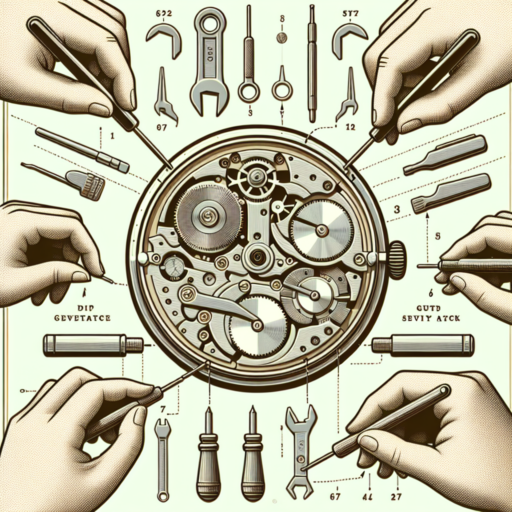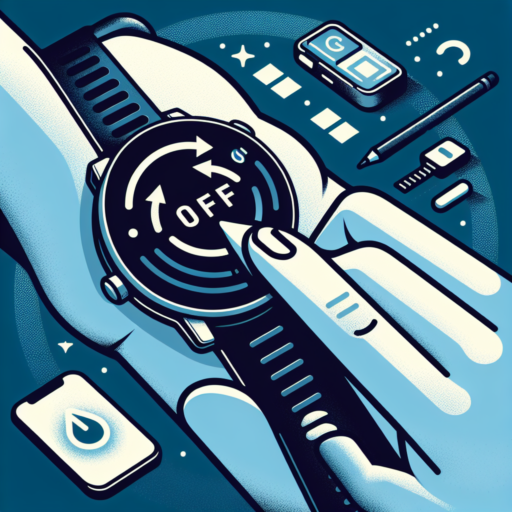How do I open the back of my watch?
Opening the back of a watch is a task that requires precision and care, especially if you’re attempting it on a cherished or valuable piece. Whether you’re looking to replace a battery, adjust the mechanism, or simply satisfy your curiosity about the inner workings of your timepiece, knowing the right technique is essential. Here’s a detailed look at how to approach this delicate procedure without causing damage to your watch.
Identify the Type of Watch Back
First and foremost, identify the type of back your watch has, as this will determine the tools and approach you need. Watch backs mainly come in three types: screw-off, press-fit, and screw-down. A screw-off back will have notches along the edges, indicating it needs a specific tool to twist open. Press-fit backs are smooth and often require a sharp knife or a specific pry tool to pop open. Screw-down backs have small screws holding them in place, necessitating a set of precision screwdrivers.
Gather the Right Tools
Once you’ve identified the type of watch back, gathering the correct tools is your next step. For screw-off backs, a case wrench compatible with your watch size is a must. For opening a press-fit case back, a case knife or a standard watch opening tool will do the job. Ensure you have a soft surface to work on, like a padded mat, to prevent scratching the watch during the process. Additionally, wearing gloves can also protect the watch’s surface from fingerprints and potential scratches.
Opening the back of your watch can be a straightforward process if done with care and the right tools. Identifying the type of back and using tools designed for that specific type are critical steps that will help you avoid damaging your watch. Always proceed with caution and consult a professional if you’re unsure.
How do I open my iWatch?
Opening your iWatch, officially known as Apple Watch, might seem daunting at first, especially if you’re new to the world of smartwatches. The process involves a few simple steps that can quickly become second nature. Understanding how to access the functionalities of your device efficiently is key to maximizing its potential and ensuring a seamless user experience.
Navigating the Home Screen
Initially, to ‘open’ or ‘wake’ your iWatch, you can simply raise your wrist. The motion sensors within the device detect this movement, waking the watch from sleep mode. If your watch doesn’t wake with wrist movement, pressing the Digital Crown on the side of your Apple Watch will also turn on the display. This circular button acts as a versatile tool, not only for turning on the watch but for navigating through menus and apps.
Using Touch Gestures
Touch gestures play a pivotal role in interacting with your iWatch. Tap the screen lightly to select items or open applications. For more in-depth navigation, a firm press on the watch face can open additional settings or change the watch face altogether. These gestures are designed to make the operation of your Apple Watch intuitive, mirroring the ease of use that iPhones are known for.
Each iteration of the Apple Watch has introduced enhancements in user interface and functionality, making it increasingly intuitive to access your favorite features. Whether it’s handling calls, responding to messages, or using apps, the key to opening up the world of possibilities with your iWatch lies in familiarizing yourself with these basic interactions.
How do you open a watch without a wrench?
Opening a watch without a wrench can seem like a daunting task, but with a little creativity and household tools, it’s entirely possible. Many watch enthusiasts prefer not to use a wrench due to the potential for scratching or damaging their valuable timepieces. Understanding the right technique and tools can make all the difference.
One popular method involves using a rubber ball. The idea is to press the rubber ball firmly against the back of the watch case and twist. The friction between the rubber and the case can provide enough grip to loosen the back, allowing you access to the inner workings of the watch without a hitch.
Another approach is to leverage the use of duct tape. Place a strip of duct tape over the back of the watch, ensuring it’s firmly pressed down. Then, hold the watch in one hand and use the other hand to twist the duct tape in the counter-clockwise direction. Much like the rubber ball method, this uses friction to open the watch back without necessitating a wrench. However, care should be taken to not leave any sticky residue on the watch.
No se han encontrado productos.
How to open wrist watch lock?
Unlocking the wrist watch lock can seem daunting at first, but with the right approach, it turns into a simple task. Whether you’re dealing with a luxury timepiece or a casual watch, understanding the mechanism behind the lock is crucial. Watches come with various locking mechanisms such as a buckle, a deployment clasp, or a push-button deployant clasp, each requiring a slightly different method to open.
Step-by-Step Guide to Unlocking a Buckle Strap
The buckle strap is one of the most common types of wrist watch locks you’ll encounter. To open a watch with a buckle strap, gently pull the pin away from the hole to loosen the strap. It operates similarly to a belt. Ensure you pull gently to avoid damaging the leather or material of the strap. Then, slide the watch off your wrist.
Opening a Deployment Clasp
Deployment clasps offer a more secure fit and can be found mostly in metal straps. To open a watch with a deployment clasp, first locate the release buttons on either side of the clasp. Press these buttons simultaneously to unlock the mechanism. In some cases, a watch might employ a single push-button deployant clasp; in such scenarios, press the single button to release the lock. Doing it correctly prevents accidental breakages and ensures the longevity of the watch’s strap.
Each wrist watch lock type is designed with both the security of the watch and the ease of use in mind. Understanding the specific lock your watch has is key to opening it without causing any damage. Remember, patience and careful handling are your best tools when dealing with delicate watch mechanisms.




